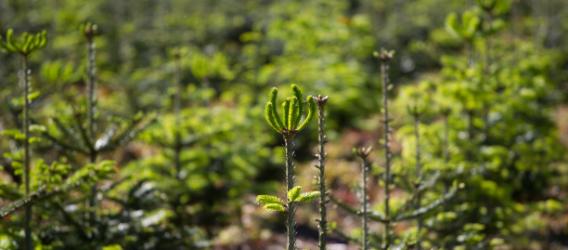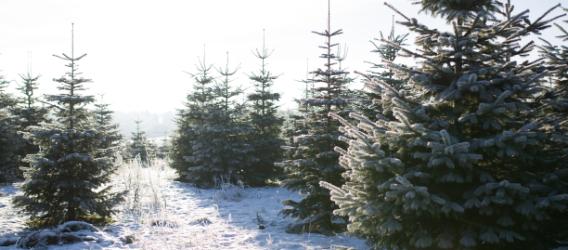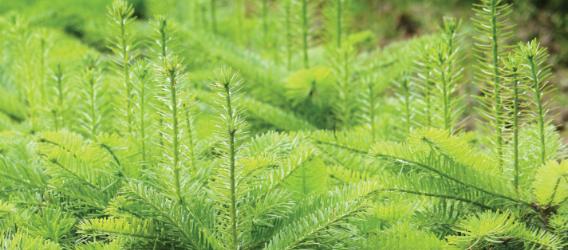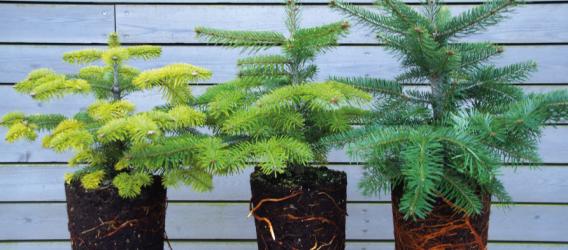
Fertilization of Christmas trees
In order to meet the high quality demands especially on colour, size and needles, it is important to fertilize your Christmas trees correctly.

How do I grow the nicest Christmas trees?
A harmonious connection between height and width together with an appropriate distance between the whorls are crucial factors for the final classification of your Christmas trees.
You can only achieve a satisfactory classification and a homogeneous result by fertilizing as needed and in the correct combination with the necessary means for plant protection.
Furthermore, it is very important to ensure that the area on which you want to grow Christmas trees is suitable for this very purpose. We always recommend to make a soil analysis to identify the soil type and the nutrients in the soil on the particular area. Together with the analysis we advice you to assess the requirements of the specific tree species in terms of soil conditions and nutrients, to ensure that the tree species are suitable for your area.
When you get the result of the soil analysis you can correct for any nutrient and trace deficiencies before planting on the area. In this way, it is easier for you to distribute the fertilizer and the nutrients evenly.

Planting on areas with low or high pH value
Does your soil analysis show that the area has a low pH, usually you can rectify this by targeted liming and subsequent decomposition.
On light soils you should use carbonate and magnesium-containing lime types, while on heavy soils it is recommended to use burnt lime.
If the soil analysis shows a very high pH, this is unlikely to change and unfortunately there is nothing you can do to rectify the problem. Such an area must be considered as useless for growing Nordmann fir.
Learn more on the page about pH values and Christmas trees.
Recommended PH values
- Pine: 4,5 - 5,5
- Fir: 5,0 - 6,0
How much fertilizer do your Christmas trees need?
It will vary how may nutrients you will have to add to your Christmas tree culture depending on tree species, the number of trees per hectare as well as the age of your culture. Pine species e.g. have a lower nutrient requirement than the fir species.
You should not fertilize specifically without having made a soil analysis first.
A principal rule is that you should make a soil analysis every second year to ensure that you bring out the correct amount of fertilizer in your culture.
If the soil analysis shows a fine spreading of nutrients, only add fertilizer corresponding to the amount leached, the amount of trees removed from the area and to the age of the culture. You should use low-chloride fertilizer which fits the results of the analysis best.
You should always fertilize twice a year. The first fertilization is done from the middle of April to the middle of June and the second from the middel of June to the middle of July. If you use fertilizer where the nitrogen is very stable, you can apply it from the middle of March. This kind of fertilizer is also very useful for summer fertilization.
Pure nitrogen fertilizers as e.g. calcium ammonium nitrate can add extra colour to the needles in the year, when the trees are to be harvested. Doing this, you will be able to get a clear result by fertilizing as far as until September.
Specific fertilization recommendations for Nordmann fir
| Nutrient | Deficiencies are often found here | Description of typical deficiency symptoms | Rectification (surface or spot treatment as needed) |
| Magnesium (Mg) | On sandy soils. | Yellow needle points on older needles. Clear boundaries between the yellow and the green on the needles. | The rectification is done with special products such as Kiserit, SoluMag or Mg0. The dosage should be adjusted to the Mg and K numbers of the soil and only to a max. 50 kg Mg/hectare/fertilization. |
| Iron (Fe) and Manganese (Mn) | At clayey areas and often in field cultures where the pH is too high. | Light green to yellowish annual shoots on otherwise well coloured trees. Generally light annual shoots. | If the high pH is due to deep lime you should reconsider if Christmas tree production is the correct thing to do. In case of a temporary problem due to previous agricultural activities, you can try to lower the pH value with sulfuric acid ammonia as source of N. Leaf spraying with sulphates of respectively iron or manganes is also an option. |
| Potassium (K) | On clayey areas K is strongly bound to the clay particles, and prolonged forest cultivation can bring K to a low and inappropriate level. This problem is typical on clayey soil. | Discolouration/yellowing of old needles (often at twigs). By strong deficiency the annual shoots will often be yellowish. No distinction between yellow and green on the needles. | Rectification is primarily done by using total fertilizer, containing K but acute deficiency can be rectified with potassium sulphate or potassium chloride. The latter can, however, be aggresive towards unripe and completely dry needles. Dosage must be adjusted to the K-number in the soil analysis. |
| Copper (Cu) | Low copper numbers are rare but often seen on "black-sanded" soils and/or on soils with a high content of humus. |
A severe copper deficiency will impede the formation of lignin in the shoots, which will make them droop. Continuous deficiency leads to trees with drooping tops, which make them look like they are growing horizontally or even downwards. Copper deficiency is not to be confused with the usual slack top shoots due to the stretching in the late spring. |
Copper deficiency can be caused by a strong binding of copper to humus in the soil. Rectification through the soil is in this case difficult. Experience with spraying of copper sulphate (max. 5% dissolution) is limited. Certain soil types with low numbers of copper are not suitable for planting Nordmann fir. |
Source: (modified after) Christensen, C.J. & Pedersen, L.B., 2002: Videnblade Pyntegrønt nr. 5.9-22, Skov og Landskab, KU. 2 pp.
How much nitrogen do Christmas trees use?
Below you can see how much nitrogen your Christmas tree culture is expected to use during a rotation period. Please note that the numbers are only intended as a guide.
| Year of growth | Annual nitrogen consumption (kg. N/hectare) |
| 1 | up to 20 kg. |
| 3 | 30-50 kg. |
| 5 | 60-90 kg. |
| 7 | 100-130 kg. |
Triwi mineral fertilizer for Christmas trees
Our Triwi mineral fertilizer has been developed by Christmas tree growers for Christmas tree growers.
The fertilizer is especially developed for Christmas trees and is composed in collaboration with Christmas tree growers. This means that our fertilizers are different than other usual mineral fertilizers. They are poor of chloride and rich in magnesium, which guarantees a good consumption of both the nitrogen and other nutrients, and the effect is a nice dark green colour.
To decide which one of our Triwi fertilizers to choose, you should rely on the analysis of your soil.
Below you can see the composition of our Triwi fertilizers.
| Nutrient | Triwi 15-4-13 | Triwi 22-3-6 | Triwi 13-1-4 |
| Nitrogen | 15 | 22 | 13 |
| Phosphor | 4 | 3 | 1 |
| Calium | 13 | 6 | 4 |
| Sulphur | 9 | 4 | 9 |
| Magnesium | 2 | 2 | 8 |
Do you need advice etc. about fertilizing your Christmas trees, then give us a call on +44 (0) 20 3630 1444.


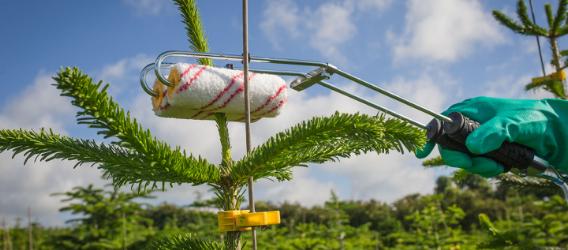
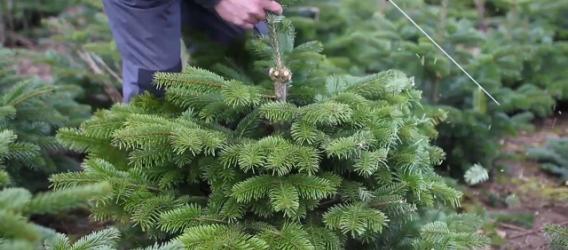
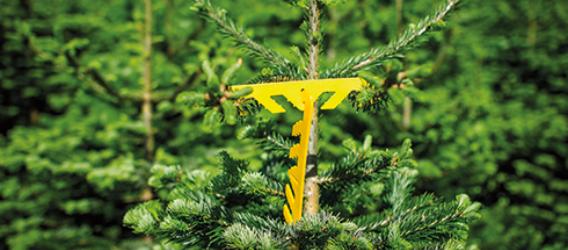
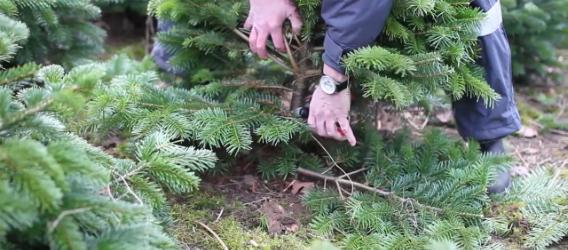
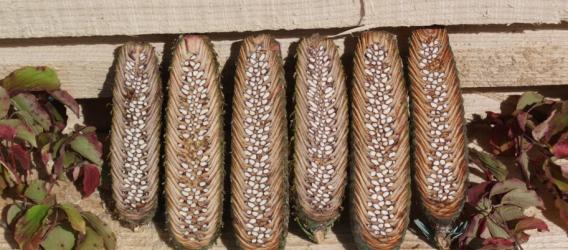
.jpg)
